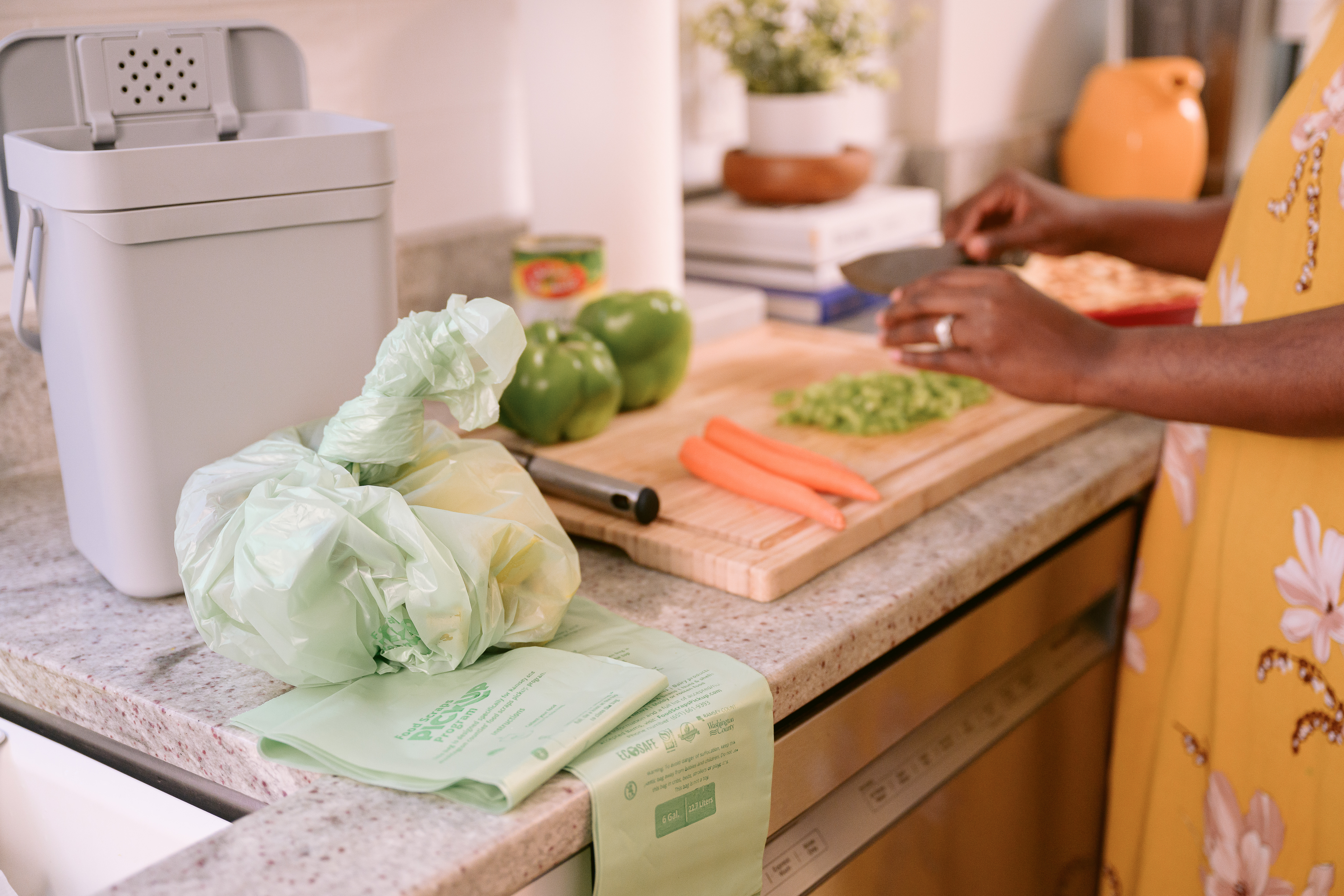Thought for food: The journey of food scraps

Have you ever wondered what happens to the compostable bag of food scraps that you leave at your local drop-off site? Where does it go next and where does it eventually end up?
Ramsey County contracts pickup of food scraps that get dropped off at county drop-off sites. Within a few days, a dump truck picks up the bin and drops the load of food scraps into the back. Light green bags fill up the dump box. The truck makes its way to a local commercial compost facility, where it drops off the load of food scraps bags, including yours.
At the compost facility, the bags get loaded into a mixer along with yard waste that includes leaves, wood chips and grass clippings. The compostable bags and yard waste get blended to create the right ratio of carbon to nitrogen, around 30 parts carbon for each part nitrogen. This ratio is important: a lower ratio could cause odors while a higher ratio will slow the composting process.
The leaves and wood chips (referred to as “browns”) produce the carbon. Carbon energizes the microbes that break down the combined material into finished compost. Nitrogen comes from the food scraps and grass clippings (also known as “greens”) and helps nurture the microbes to continue growing and reproducing.
Bacteria make up the majority of the microbes in compost and play a very important role in breaking down the organic material. Other microbes include fungi and protozoa, which are single-celled organisms.
Once properly combined, the mixture is hauled by loaders and spread into long rows that pile on top of pipes. These pipes force air through the mixture, which gives the microbes oxygen. The microbes break down the compostable bags, food scraps and yard waste.
Their work creates energy which can heat up the piles to 160 degrees Fahrenheit. Pile temperatures have to stay at 131 degrees Fahrenheit or above for several days to meet standards for reducing microorganisms that can cause disease and weed seeds. Even on a cold winter day, the microbes continue working and the piles stay very, very warm.
Six months pass. The piles have cooled and turned into finished compost. The compost looks very dark is rich with nutrients from the food scraps and yard waste that produced it. Once it is tested and confirmed ready, it can get collected and sold for gardening and landscaping.
A dump truck arrives once more, this time to collect the finished product. Compost gets loaded into the dump box and the truck takes it to a familiar Ramsey County yard waste site. Passing the food scraps drop-off dumpster, the truck unloads the result of six months of work.
Your compostable bag is no longer a bag of veggie and fruit peels, eggshells and bones. Now, it can get picked up by someone new as compost to use for their garden.
Turning food scraps into compost [Video]